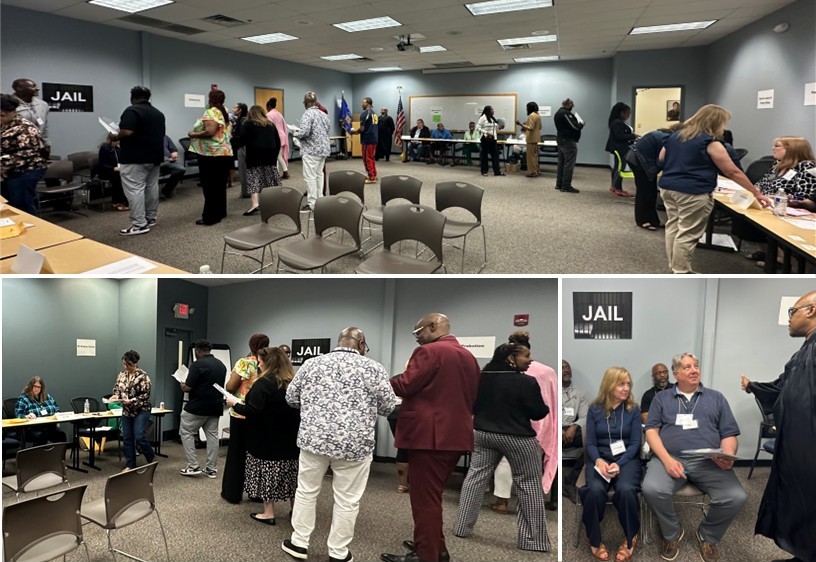At the recent Midwest Urban Strategies Convening, one session stood out as both powerful and deeply personal: the Reentry Simulation. Designed to provide participants with a snapshot of what it’s like to navigate life after incarceration, the exercise moved beyond data and statistics, offering an immersive experience that revealed the very real barriers faced by individuals impacted by the justice system each day.
In recent years, there has been meaningful progress in workforce for individuals with criminal records. Employers are increasingly recognizing the potential of this population, and many are shifting hiring practices to ensure they are included. However, the Reentry Simulation made it painfully clear: we still have a long way to go when it comes to providing the comprehensive support needed to ensure that system-impacted individuals not only access opportunities but also succeed within them.
Participants in the simulation were given fictional identities that mirrored the lives of individuals recently released from prison. They were tasked with meeting parole requirements, securing housing and employment, accessing transportation, and addressing mental health or substance use needs—all within a compressed and chaotic timeline. Even in a controlled environment, the emotional weight of navigating complex systems and overlapping demands quickly became overwhelming.
What followed was some of the most eye-opening and honest feedback of the entire convening. Comments ranged from “I knew the barriers existed” to “How can anyone move forward in life with these types of obstacles?” The simulation didn’t just raise awareness—it sparked empathy. It forced us to confront the pre-conceived notions baked into our systems and challenged us to do better.
The Reentry Simulation exposes more than the need for fair treatment. By going through the simulation, participants realize that individuals affected by justice need to be treated with dignity and provided with the tailored support they need to rebuild their lives. It means creating pathways that acknowledge past harm and prioritize second chances. It means working collectively—across agencies, employers, and communities—to remove systemic hurdles and replace them with support structures.
The success of system-impacted individuals in the workforce shouldn’t be seen as extraordinary; it should be expected. But that expectation only becomes reality when we invest in wraparound services, peer mentorship, trauma-informed care, and ongoing training for employers. Programs that operate with this understanding are already seeing strong retention and engagement outcomes.
The Reentry Simulation reminded us that job placements do not just measure impact; they also reflect it. It’s measured by dignity restored, trust rebuilt, and lives transformed. It reminded us that behind every statistic is a person—someone’s parent, sibling, neighbor—trying to write a new chapter.
As practitioners, funders, and partners, our charge is clear: we must continue to remove barriers, challenge assumptions, and build systems that recognize the full humanity of those returning home. That’s how we ensure that success is within reach for everyone.
Top of Form
Bottom of Form






